A 2021 British film called The Dig told the true and fascinating story of an earthen mound in a lady’s field in Suffolk, England, in 1939. It turned out that the unremarkable mound yielded an extraordinary find - an early, perfectly preserved Anglo Saxon ship, dating from somewhere around 600 AD. The film, opined one critic, was “serious, intellectually committed, and emotionally piercing”.
There is an unremarkable earthen mound in the middle of the field on our family property too, in Horton Township, not far from Renfrew, Ontario. I don’t think it contains an Anglo Saxon ship. In fact, I don’t think it contains anything at all. And I’m not sure that anyone will ever dig it up or commit to doing anything serious, intellectual or emotionally piercing with it.
Nevertheless, I do enjoy imagining a boat of some kind running aground here back in the Wisconsinan Ice Age while cruising the Champlain Sea, about 10,000 years ago. Lousy luck for the captain and crew of the boat, I suppose, but it will make a great story for my two grandchildren, at least until they figure out that I am prone to flights of unlikely fancy.
There is more recent (and more credible) history on and around our wedge-shaped property. The long side of the triangle is bounded by the Bonnechere River. The First Chute, one of five small waterfalls on the river, is 3 km. downstream from us. The Second Chute, about 7 km. upstream, became the centre of the Town of Renfrew in 1895.
Our frontage on the Bonnechere is very peaceful. I built a sturdy bench there, and it is a wonderful place just to sit and enjoy tranquility. It wasn’t always that way. In ages gone by the First Chute was a gathering place for First Nations. Surely the Algonquins of the day would have paddled upstream for fishing, hunting, or like us, just to enjoy their pristine surroundings. Champlain may have as well on his voyages of discovery up the Ottawa River (let’s start a rumour!).
In the spring months of the 1860s and 1870s, scruffy, tired and probably wet log drivers would have been happy as they passed the spot where our bench now sits: one more obstacle at the First Chute and they would be into the Ottawa River, not far from the Chenaux sorting gap where squared logs were sorted, boomed and then shipped to Quebec City for transport to the British military. For the log drivers, it was the end of an arduous and dangerous journey that had started weeks earlier in Algonquin Park.
Horton Township was named after R.J. Wilmot Horton, a British MP, knighted in 1831, who led an initiative to encourage emigration from Scotland and Ireland to Horton Township in 1823. That may explain the unique delivery of the English language by a true “Valley Boy”. Land clearing and farming grew with the need for food, horses and other supplies for the burgeoning logging industry. In 1871, a corner of our property was bisected by the Canada Central Railway, precursor to the Canadian Pacific mainline. More than a century later, we enjoyed taking our kids to the tracks when a train went by, hoping for, and usually receiving, a honk.
The original house, built in 1879, was made from hand-squared chinked logs, with cedar shakes on the roof. Over the decades that followed, a new kitchen, a laundry room, a woodshed and two verandas were tacked on to the original log structure. Each has sagged and shifted in its own unique way, possibly as a consequence of being shaken by every passing train for over 100 years, with the result that there is not a level floor or a true 90 degree angle to be found anywhere in the building.
A barn and several outbuildings were added nearby. None of them were particularly square either.
The property changed ownership twice before it was acquired in 1923 by a CPR section worker and farmer. He and his wife raised four children there, initially with no running water, no electricity (until 1960), and only wood heat.
When he passed away in 1968 the property changed hands briefly until my parents bought it in 1974.
My mother and father came to Canada in 1949 as refugees from post-war Europe. Like many thousands of others, they carved out a new beginning, my father as a labourer in the underground Toburn mine in Kirkland Lake, a small bustling town where my brother was born. My multilingual mother served as an interpreter, and occasionally as a referee, for the many languages and cultures that had been thrust together in the rough-and-tumble frontier of Northern Ontario.
Already then, they dreamt of buying a property of their own as a family gathering place, re-creating cherished childhood memories. Sadly, my mother died in 1966, a casualty of cancer, and never saw the dream come true. But in 1974, my father did. After a 25 year journey from Kirkland Lake to South Porcupine, Blind River (my birthplace), Thetford Mines, Fredericton, southern Peru, and the Indonesian province of Irian Jaya, he and my step-mother settled in Horton Township. They were “home”.
The year after my parents moved to Horton, I enrolled in the forest technician program at Algonquin College in Pembroke. At the time, I was attracted by the idea that forestry was about riding a horse and wearing a uniform.
It didn’t take long to find out that there might be more to it than that:
About two weeks into my first term at Algonquin, a friend, my brother and I headed into the woods looking for two tall straight black spruce trees, which my friend needed as masts for his sailboat. Flush with my budding knowledge of trees, I led them to the back end of the property, and proudly pointed to two 40 foot tall, straight, and very heavy black spruce trees. We cut them down, muscled them out on our backs, peeled them, and set them up on sawhorses to dry. We were very tired when we finished.
About a month later, as tree identification training was progressing at school, I learned to my chagrin that we had in fact cut two balsam fir trees instead of two black spruce trees. Balsam fir trees without a doubt are the worst possible trees on the planet for boat masts.
We never did find any black spruce on the property. There are none. I still struggle with tree identification, and I still hate balsam fir.
I soon forgot about horses and uniforms. Many more “life lessons” followed, each one helping me thrive in the real world of forestry for the next 30 years.
I, like my parents, shared the dream of a family gathering place. That dream came true for my wife Susie and I too, via moves to Thunder Bay, Chapleau, Cochrane, Mattawa and Ottawa. We built our house on the property in 2007 and have been “home” ever since.
We have trails cut throughout the property. Every year I plant a few hundred trees, trying to re-establish mixed stands with a higher proportion of white pine and white and Norway spruce. Plantations of white spruce established under the Woodlands Improvement Act in the late 1960s have been thinned and pruned. Naturally occurring young red and bur oaks occur naturally and are “encouraged” to grow straight. There is lots of cedar, aspen and, yes, balsam fir. We tap our few sugar maples every spring.
Our highly technical forest management strategy is to make the property look loved. For the most part, we are succeeding.
Every year at New Year’s, friends, aunts, uncles, cousins and a growing gaggle of kids gather to celebrate each other, our family, and this special family gathering place. This year, for the 50th anniversary, our traditional huge bonfire was by far the biggest and bestest ever. We toast the legacy of our parents in bringing us together here.
In 2025, the log drives on the Bonnechere have long since been replaced by migrating ducks and geese. Deer, muskrats, occasional otters and beavers forage among the big, white pines quietly lining the riverbank.
The fields where the sheep used to graze have grown into many different kinds of colorful wild grasses. I can’t identify any of them. Butterflies can, and they abound.
The CPR tracks have been gone for over a decade. We still miss the train honk. But like the train engineers before them, people who go by on the recreation trail that replaced the tracks, whether walking or riding on bikes, ATVs or snowmobiles, usually offer a friendly wave.
The crooked, creaky old house, still standing after all these decades, should really be knocked over for health and safety reasons. My brother and I can’t quite bring ourselves to get it done.
And what of the unremarkable mound in the field? Might there be a ship in there after all?
No.
But perhaps our family's grandchildren will one day take their children to the earthen mound and dig a hole in it, looking for fanciful treasure. Maybe they will find the (very small) ship that I will have buried there. And then maybe their parents will tell them a story …







